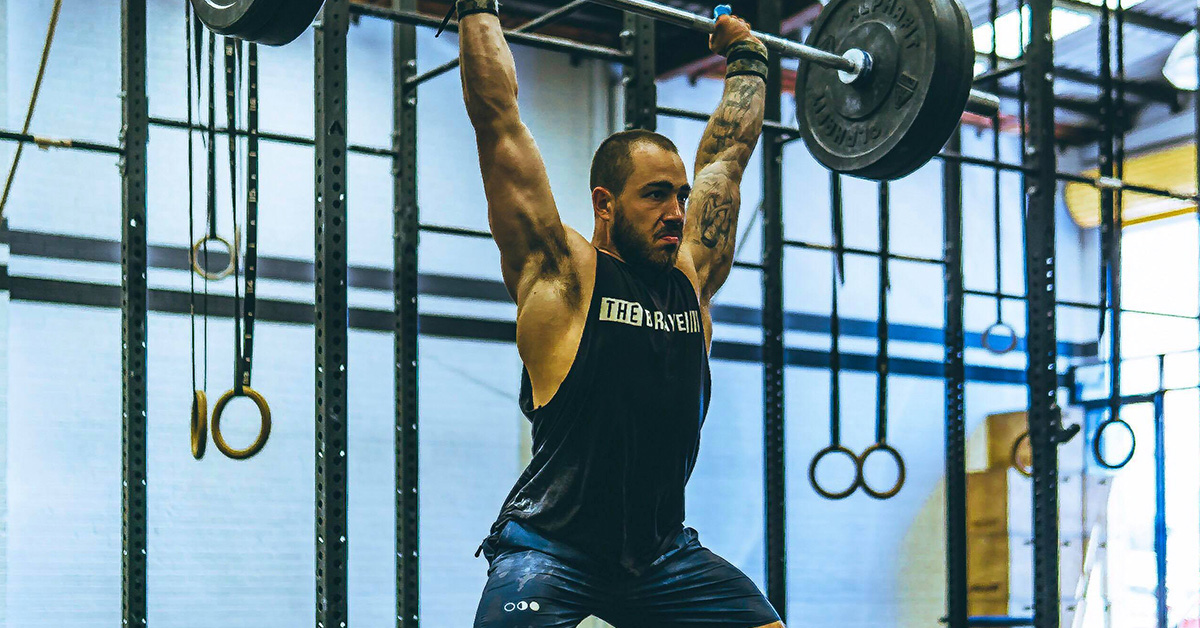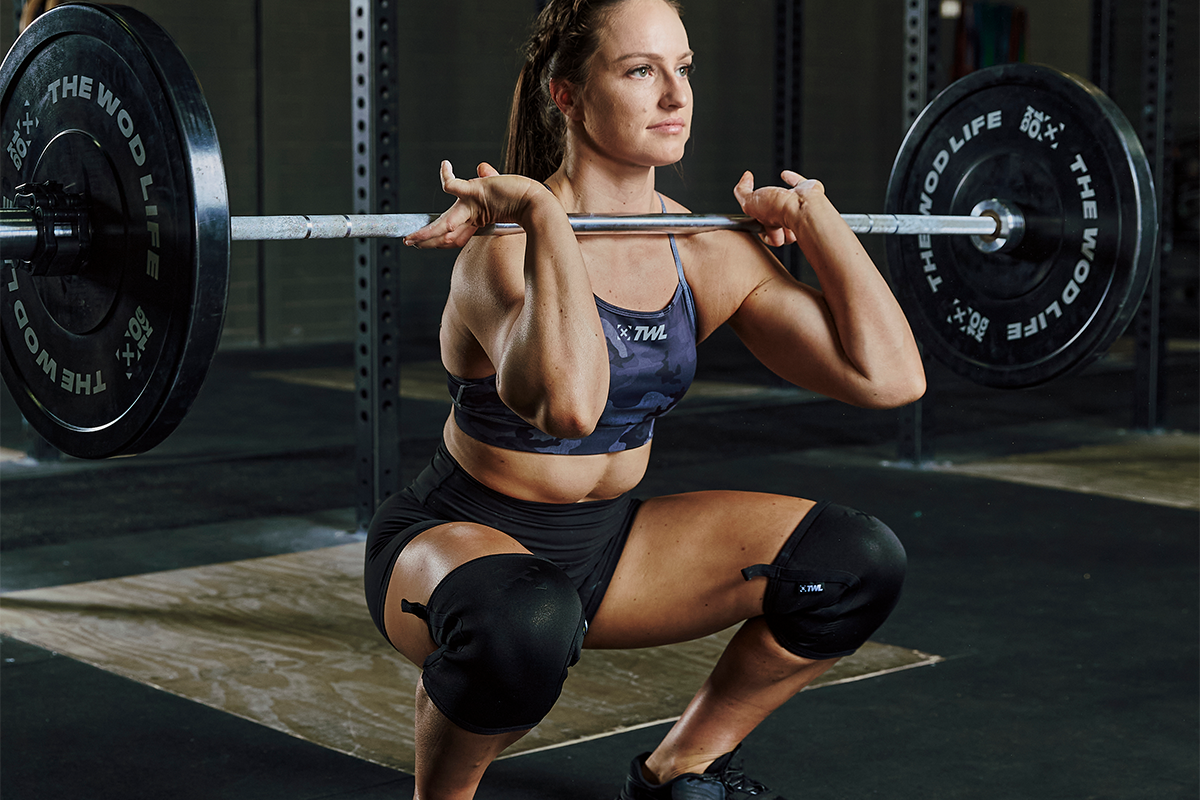Most traditionally, the clean and jerk lift uses a split jerk, where one foot moves forward and the other foot moves back. However, this isn’t your only option. Lifters can choose from the:
- Split jerk.
- Push jerk.
- Squat jerk.
Let’s go over each one and discuss how to know which is best for you.
What Are the 3 Kinds of Jerks?
Split Jerk
View this post on Instagram
In the split jerk, you load the quads into roughly a quarter squat and explode upward. As you do, you launch the bar overhead mostly with the strength from your legs, moving under the bar only once it’s reached its peak height. To get under the bar, your feet split, with one going forward and one going back, equal distances from the center.
To finish the lift, you recover by bringing your forward foot back first, followed by your back foot forward.
Despite what many athletes think, the split jerk is a highly technical movement. It requires precision, explosiveness, speed, mobility, and strength under the bar.
The split jerk is the most commonly taught of the jerks when it comes to the full clean and jerk. This is because for the average athlete, the split jerk allows them to lift the most weight, compared to push jerks and squat jerks. It gives you plenty of room to catch the bar from a deeper position. Also, when executed correctly, the split jerk is incredibly stable because your body is covering a larger area, considering your feet are split.
It’s also the most manageable and demands the least amount of flexibility.
Push Jerk
View this post on Instagram
The push jerk requires you to dip and drive the bar, and catch it in a squat above parallel — ideally higher, like a quarter squat.
Because you have very little room when it comes to getting under the bar, this lift is best for lifters who have a strong drive and can thus launch the bar higher overhead with just the power from their legs.
The push jerk also demands more precision than the split jerk. You can easily recover from a sloppy split jerk. Because a push jerk is less stable, though, you don’t have as much room for error.
Athletes will sometimes switch to push jerks because split jerks aggravate their backs. With the split jerk, it’s easier to arch your back and stick your ribs out — something you want to avoid. In a perfect world, your torso and arms overhead form a straight line. Simply put, this is easier to accomplish with a push jerk. It also typically feels like the least taxing of the jerks.
Squat Jerk
View this post on Instagram
In the squat jerk, you dip and drive the bar as high upward as possibly using the force from your legs. Once it’s reached its peak, you begin to squat underneath the bar, lock your arms out with the bar overhead, and finish executing a full squat.
The squat jerk is perhaps the most challenging of the three because it requires significant mobility in the shoulders and thorax, balance, and strength. It essentially requires you to squat the weight twice. This is typically a lift used only by the most advanced athletes due to its difficulty level. The squat jerk offers the least amount of room for error.
However, it can be a good option for lifters who aren’t able to drive the bar very high and thus need more room to travel underneath it. Also, there are indeed athletes who naturally have exceptional mobility, and the narrow grip doesn’t present a problem for them.
The Verdict: Which One is Best for You?
View this post on Instagram
The best answer? Practice all three! Their names might sound similar, but each of these three lifts offers its own unique benefits. You stand to gain a lot from training the split jerk, push jerk, and squat jerk.
However, there are a few key takeaways when it comes to trying to narrow down which jerk is best for you:
- If you’re new to the sport, start with the split jerk.
- If you have even slightly limited mobility, go with the split jerk.
- If you’re having trouble picking a jerk, go with the split jerk.
- If you have limited mobility and a really strong drive, the push jerk could work.
- The push jerk might work for moderate weights, but in all likelihood, you’ll be able to lift the most with the split jerk.
- If you have great mobility but a weak drive, and if you have more experience with lifting, try the squat jerk.
Want a little more help with your split jerk? Check out these blogs!
Split Jerk Recovery Drill From Noah Ohlsen

















